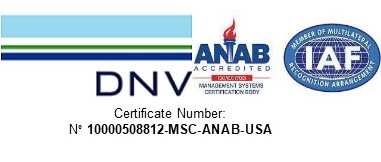The U.S. Army Corps of Engineers (USACE) contracted Weeks Marine to build the saltwater sill at Mile 63.8 Above Head of Passes (AHP) as a barrier to the saltwater wedge’s migration upriver as designed to protect freshwater intakes at approximately Mile 74 AHP. The sill’s construction to the first target elevation – 55 feet began with a quick test of the dredge and pipeline set up on Tuesday (July 11) and began around the clock dredging operation the morning of July 12 with the transit restrictions noted in the attached Marine Safety Information Bulletin (MSIB) issued by the U.S. Coast Guard (USCG). Weeks expects to have the sill built to – 55 feet the middle of next week (approximately July 26).
This is the first time the sill’s construction has been required in back-to-back years as it was constructed during last year’s low water event also by Weeks Marine (October 2022). The hydrology of the Mississippi River is ever changing as 2019 was the first time the Bonnet Carré Spillway had been operated in back-to-back years (2018/2019) and twice in the same year and briefly in 2020 (three years in a row).
The USACE last measured the saltwater wedge on July 17, 2023, and reported it was at Mile 52.2 AHP.
There is a second attached MSIB, Volume XXIII Volume: 041 detailing the impact or potential impacts related to low water conditions. The MSIB requested that ports and facilities report low water impacts to the USCG.
“Ports and Facilities are requested to report impacted operations due to low water conditions (e.g., reduced drafts, interruptions to mid-stream operations, etc.) to faciliticsnola@uscg.mil.”
The stage at Cairo at 1100 hours today was 18.28 feet with a 24-hour change of + 3.2 feet (Precipitation driven) tomorrow’s forecast predicts another rise to 19.8 feet. The following chart details the stage readings at Cairo, IL over the last month (June 20 to July 20, 2023).The National Weather Service’s (NWS) Extended Streamflow Prediction forecast the stages at Cairo to continue a quick rise to 21.0 feet on July 22 and then to resume a slow fall to 10.6 feet on August 17 (2023).
The NWS recently confirmed the country is being influenced by the prevailing El Nino weather pattern, that can be linked at times to higher precipitation levels “precipitation increases significantly”. Although the location of precipitation is also a critical factor in increasing stages on the Mississippi River.
During 2019 and 2020 there was a lot of media attention focused on increased precipitation leading to more high river stages with multiple records being set such as the increased operation of the Bonnet Carré Spillway. The Spillway was operated in back-to-back years 2018/2019 for the first time ever and repeated in 2019/2020 and then the first and only time (so far) the flood control structure was operated twice in the same year 2019. One of the caveats related to the increased precipitation forecasts was that more extreme weather events would also increase – thus extreme droughts or increased low water events were included in the same weather briefings. However, there has not been a crest recorded on the Carrollton Gage higher than 14.5 feet since 2020 the last operation of the Bonnet Carré Spillway with a crest of 17.61 feet on April 16, 2020, eclipsing the crest from 2019 at 17.25 feet on May 10, 2019.
The final attachment is a document provided by the USACE St. Louis District to detail channel conditions – the St. Louis District as the Navigation Channel Condition Status Report as issued on July 19, 2023. This report provides a list of the activities related to low river levels with closures and channel or channel infrastructure maintenance projects and documented areas of shoaling to include river stage data and dredge assignments relevant to the date of the report. The USACE previously moved the government dustpan dredges (HURLEY and JADWIN) from the Crossings Above New Orleans (deep-draft channel) to address shoaling upriver on the shallow-draft channel.
The graphs below are reproduced from NOAA’s National Weather Service website and detail the latest forecasts for Cairo (IL) and New Orleans (LA) the forecasts represent an experimental product to account for the complexity of accurately predicting long-range precipitation. These forecast projects stage levels based on expected precipitation for 2 days (top) and 16 days (bottom) and was developed within the North American Ensemble Forecast System (NAEFS) computer model and highlights Quantitative Precipitation Forecasts (QPF). Along with the forecasts, a shaded area is also provided to indicate uncertainty for the forecast each day in the future. These plots are experimental and not an official forecast product.
CAIRO QPF FORECAST:
NEW ORLEANS QPF FORECAST:
The 24- and 48-hours predictive precipitation charts below are reproduced from the National Weather Service, there is much needed precipitation happening or forecasted for areas demonstrated in the two precipitation charts reproduced below including systems across the western states and Pacific Northwest and across the Mississippi River Basin. Increases to river gages may continue to have positive impacts on stages level, as a rule of thumb a rise at Cairo (IL) takes approximately 20 days to reach New Orleans (Carrollton Gauge).
24-HOUR QPF FORECAST:
48-HOUR QPF FORECAST:
The information provided below is shared by NOAA’s National Water Center (Tuscaloosa, AL). The quoted material below is reproduced from today’s prototype documented in the National Hydrologic Discussion:
Synopsis…
Locally significant flooding possible today across the Southern High Plains and South-Central Plains into the Lower Ohio/Tennessee Valleys… Isolated flooding impacts possible Friday across the Northeast and New England and Mid South into the Southeast… Daily rain and isolated flooding potential for the Southwest…
Discussion: (Precipitation heavy across Mississippi River Basin – forecast.)
Southern High Plains…
Scattered flooding impacts are expected this afternoon into tonight as heavy rainfall (2 – 4″, with locally higher amounts) progresses across eastern CO, western KS, and the OK Panhandle. Most of this region has seen above normal precipitation for the past 14 day period (RFC QPE) (1 – 4″) positive departures from normal), however drought conditions remain across western KS which should help to mitigate some of the hydrologic response in that region, with exception to urban flooding. Rainfall rates are expected to be exceptionally high, approaching 3″/hr (WPC), so this will be the primary driver for flooding concerns in urban areas and small headwater streams, where locally considerable flooding impacts will be possible.
South-Central Plains into the Lower Ohio/Tennessee Valleys…
Localized flash, urban, and small stream flooding impacts are possible across eastern KS, MO, TN, southern IL, and KY due to moderate rainfall this morning as convections slowly propagates eastward. These showers and thunderstorms should persist throughout the day, slowly weakening as they track east, bringing an additional 1 – 3″ (WPC/RRFS) over the areas mentioned above. Historical rain fell across southern IL, western KY, and far northwest TN over the previous 24 hours with 5 – 11″, while many other locations outside this area received generally 1 – 3″ (MRMS). Soils are primed from recent rainfall while streamflows are generally running normal to much above normal (USGS). With saturated soils and above streamflows, forecast rainfall rates will likely overwhelm infiltration and channel capacity, leading to flash, urban, and small stream flooding, especially across southern IL, western KY, and far northwest TN. Local rapid rises on larger streams and rivers may also be possible under the heaviest rainfall.
Mid South into the Southeast…
Localized flash, urban, and small stream flooding impacts are possible across portions AR, MS, AL, GA, and FL for days 2 – 4 (Fri – Sun) as moderate to locally heavy rainfall affects the region, 1 – 3″ (WPC). Soil moisture content varies, but in general ranges from 50 – 80% (NWM Soil Moisture Analysis). Streamflows remain near normal to above normal, with a few isolated streams much above normal across MS (USGS). Depending on the placement of heaviest rain, widespread flooding impacts are not anticipated at this time due to the antecedent conditions and current streamflows. However, if the axis falls across an area that is seeing higher saturated soils and higher streamflows, such that across central MS, hydrologic responses and flooding impacts could become more widespread. Signals with the NWM for the SRF and MRF are generally meager, but there are some signals beginning to show up in the MRF, with very isolated ROF signals across southern AR and northern LA, with AEP values generally 50% or greater. All this suggests that the flood threat will primarily be localized and impact mainly small streams.
MISSISSIPPI RIVER STAGE UPDATES:
The Carrollton Gage reading at 1000 hours today was 3.03 feet the 24-hour change feature was unavailable.
The National Oceanic and Atmospheric Administration’s (NOAA) National Weather Service Extended Streamflow Prediction (28-Day) for the Carrollton Gage issued today forecasts will continue a slow erratic fall to 1.9 feet on August 17 (2023).
The USACE will monitor the impact of river stages on the saltwater wedge, although the predictions continue to include heavy precipitation across wide areas of the Mississippi River Basin, the long-range forecasts continue to show a quick rise followed by steady falls across the Mississippi River system.
The Mississippi River Discharge at Red River Landing (Mile 302.4 AHP) today was reported at 292,000 cubic feet per second (cfs) the lowest discharge recorded during the low water event of 2022 was 121,000 cfs recorded on October 25, 2022.
With You,
Sean
Sean M. Duffy, Sr.
Executive Director




